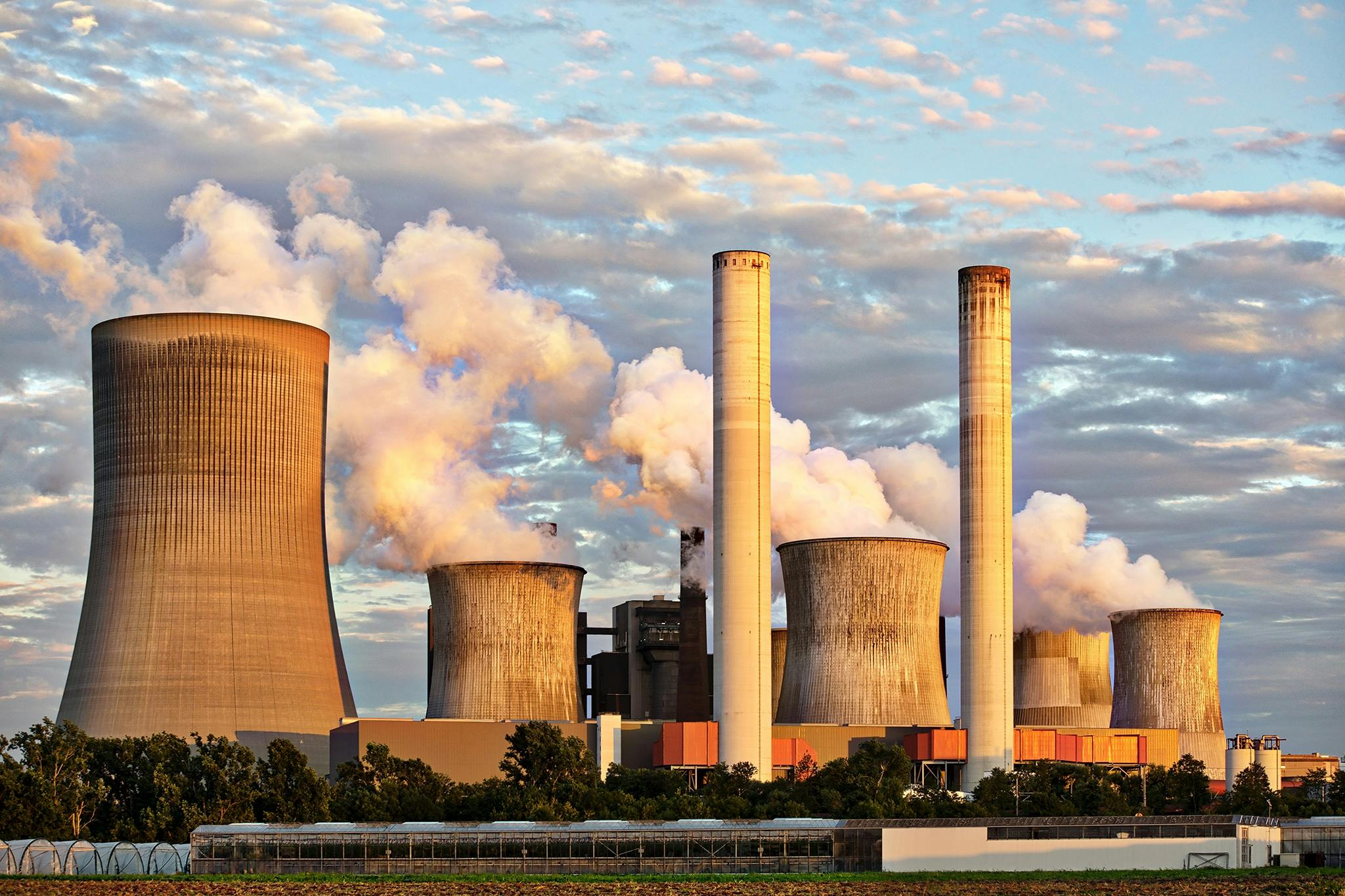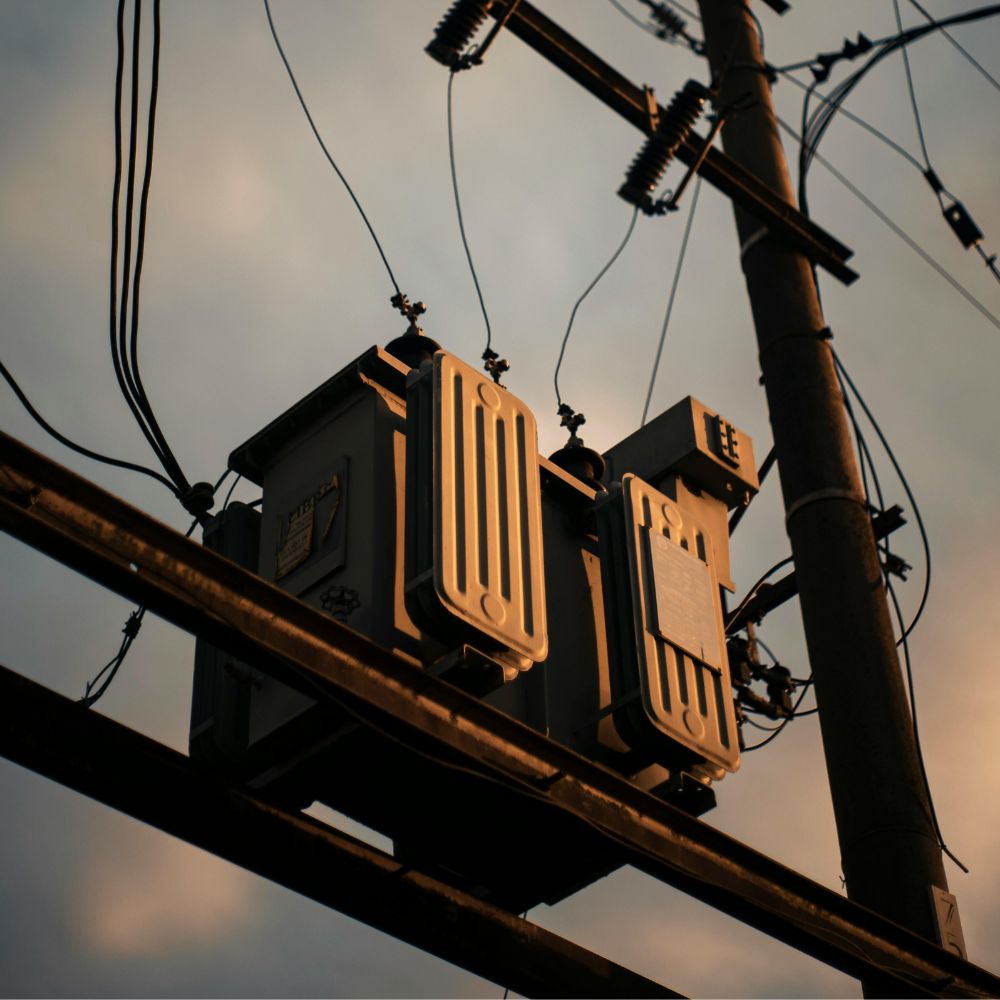Enhancing The Power and Energy Sector With IIoT: A Comprehensive Guide
- 2024-06-01
INTRODUCTION:
The role of electricity in our lives cannot be overstated. About 40% of energy from all sources is used for electricity, making it an indispensable resource in today's world.
Its high potential and efficiency in generation, storage, and conversion into other forms of energy make it essential for executing tasks, from small-scale activities to mega projects. It is virtually impossible to imagine life without electricity, as it is required in almost every sector of human society.
The importance of energy is such that financial institutions use the per capita energy consumption of a country's citizens as a metric to evaluate its level of development.
In this informative blog, you will learn about the power system and its major components, the challenges faced by the power and energy sector, as well as an introduction to the Industrial Internet of Things (IIoT) and how this futuristic technology is transforming the power and energy sector.
FUN FACT: Speed of electricity is 2.7 lakh km/s i.e. 90% of speed of light but drift velocity of electrons in conductor is around few mm/s.
UNDERSTANDING POWER AND ENERGY SECTOR
An electric power system is a complex network of interconnected components designed to generate, transmit, and distribute electric power.
For instance, the electricity powering the device you are using to read this blog is generated at a power station located far away and then delivered to your home through a large grid system.
The key stages of the power system are as follows:
GENERATION

Electricity is generated in a power station, which is located far away from the load centres due to environmental and economic reasons. In the power station, electricity is primarily generated by burning fossil fuels such as coal, oil, and gas. This process produces a large amount of smoke and residual particles, contributing significantly to global warming and leaving a high carbon footprint.
It also directly and indirectly leads to significant air, water, and soil pollution, raising environmental concerns. Major components in a power station include the furnace, boiler, turbine, condenser, and cooling towers.
TRANSMISSION:

The electricity generated in the power station is transmitted through high-voltage transmission lines to reach load centres such as cities or industrial areas.
To minimize energy losses during transmission, the voltage of electricity is increased to a range of 200 to 400 kV. The major components of the transmission system include transformers, transmission towers, conductors, and insulators.
DISTRIBUTION:

Once electrical energy reaches the end user, its voltage is reduced for safety reasons. This energy is distributed to end users through individual connections to meet their power needs.
The major components of the distribution system are the distribution substation, distribution transformers, switchgears, and service connections.
CURRENT CHALLENGES IN POWER AND ENERGY SECTOR:
DEMAND & SUPPLY IMBALANCE:
The increased population and extensive use of electricity-driven devices in daily life have resulted in a higher demand for electricity than the supply can meet. In 2023, the peak demand for India was 229 GW, while the peak supply reached 224 GW, creating a significant gap.
As a result, load shedding, the intentional switching off of power supply to specific areas, has become a common occurrence, which is not a desirable feature of a reliable power supply.
AGING INFRASTRUCTURE:
The infrastructure needed in the power and energy sector is very costly, and much of it, including transmission lines, power grids, and overhead wires, was built in the past century and now requires repair or replacement.
Due to technical and economic factors, this process is slow and time-consuming. One of the significant issues caused by aging infrastructure is power outages and frequent faults in the electrical grid.
ENVIRONMENTAL CONCERNS:
The energy sector relies heavily on fossil fuels for the generation of electricity. 57% of total electricity in India is generated through fossil fuel, with 49.3% from coal, 6% from gas, 1.6% from lignite, and 0.1% from diesel.
Fossil fuel generates a huge amount of pollutants which directly and indirectly pollute air, land, and groundwater, and plays a major role in global warming.
ENERGY SECURITY:
Electricity has become a necessity for individuals and society. Sensitive areas such as hospitals require uninterrupted energy. The power system should also be reliable, resistant to faults, and provide electricity without causing blackouts.
A blackout is a condition when a major part of the electrical grid fails and the system fails to supply electricity to the area where the blackout occurs. In the modern world, a blackout is as critical as war or a natural disaster for the nation.
Moreover, the quality of electricity plays an important role in the overall health of the power system, and its connected equipment's parameters such as voltage, current, frequency, etc., should be within desired limits, otherwise, it results in increased energy losses, undesired working of equipment, and potential risk of damage.
INTRODUCTION TO INDUSTRIAL INTERNET OF THINGS
Industrial Internet of Things or IIoT refers to a network of connected devices in the industry. Notable characteristics of IIoT device is that they transfer data without human – human or human – computer interaction.
Connected devices communicate via gateways which are physical devices that filter and transmit it to other devices and software’s.
HOW IIoT NETWORK WORKS?
An efficient IIoT networks does the two main work inter connect individual devices with each other and with the central system and seamlessly store, manage and analyze data transmitted from the network devices.
All these things become possible by the following technologies used in an IIoT network
IIoT SENSORS
IIoT sensors are present on the equipment to capture device parameters such as operating temperature, speed, vibration, energy consumed along with tracking ambient conditions such as temperature, pressure, humidity, etc. in which device is working.
All of this information can be processed internally to provide real-time actions or it can be transmitted to central system for advanced analysis.
CONNECTIVITY
Transaction of large amount of data is the heart of any IIoT network. All the network device generates huge amount of data which needs to be transmitted internally or to the central system.
To do this strong Wi-Fi network with sufficiently large bandwidth is used which transmit tons of data with low latency and power consumption.
CLOUD STORAGE AND COMPUTING
Cloud Storage simply means storing data on the internet with the advancement of cloud storage and computing flexibility and usability of IIoT has greatly increased.
IIoT networks can get large storage and processing power based on the demand. This enables device within network to capture and transmit larger and more complex data sets like never before.
ARTIFICIAL INTELLIGENCE& MACHINE LEARNING
Real time data processing and conditional actions are the two important features of IIoT network. Manually processing of large network data requires huge time and man-power instead Artificial Intelligence is utilized to process tons of data automatically at the blink of the eye.
Moreover, Machine Learning algorithms help analyze network data with other attributes to make more detailed analysis and gain insights like never before which helps organization to save resources and get an upper hand from rest of the competitor.
CYBER SECURITY
Most important feature of IIoT i.e. connectivity via internet brings a risk of unwanted trespasser in the network which otherwise is tightly secured with firewalls and protection protocols.
Fortunately, security protocols are becoming more IIoT friendly day by day with advancement in IIoT field, keeping data of IIoT network and of organization in safe hands.
To know more about IIoT you can go through our previous blog on IIoT
The Future is connected: A journey into the world of Industrial IOT
HOW IIoT IS TRANSFORMING THE POWER AND ENERGY SECTOR
In this section, we will explore how the Industrial Internet of Things (IIoT) is addressing the energy sector's challenges discussed earlier.
SMART GRID MANAGEMENT
Smart grid management is a ground-breaking approach to managing electrical grids using IIoT to improve efficiency, reliability, and sustainability.
Key components of smart grid management include:
- Real-time monitoring and control
- Improved fault detection and response
- Automated system adjustments to maintain stability
- Enhanced load balancing
- Efficient demand response
PREDICTIVE MAINTENANCE
Predictive maintenance is a proactive approach that utilizes IIoT to monitor equipment conditions and predict maintenance needs. This approach helps prevent unexpected failures, reduces downtime, and optimizes maintenance schedules, ultimately improving operational efficiency and reducing costs.
Key features of IIoT that improve predictive maintenance are:
- Real-time monitoring
- Data analytics of collected data
- Condition-based maintenance using health indicators and predictive insights
ASSET MANAGEMENT
IIoT is revolutionizing asset management in power systems by providing detailed insights into asset health, enabling predictive maintenance, and optimizing resource utilization.
This leads to improved efficiency, reliability, and longevity of critical power system assets, ultimately contributing to a more reliable and cost-effective power supply.
ENERGY CONSUMPTION MANAGEMENT
Energy management involves the strategic use of resources to monitor, control, and optimize energy production, distribution, and consumption. It aims to improve energy efficiency, reduce costs, and minimize environmental impact. Major tools and technologies in energy management include:
- Energy Management Systems (EMS)
- Building Management Systems (BMS)
- Energy Storage Solutions
ENVIRONMENTAL MONITORING
Efficient environmental monitoring using IIoT is achieved by deploying a network of sensors to monitor various environmental parameters such as air quality, water quality, soil conditions, and noise levels.
Data collected from these sensors are analysed in real time using AI and ML algorithms to provide insights and take necessary actions, as well as generate automated reports for regulatory bodies.
GRID SECURITY
IIoT enhances grid security in the power sector by providing real-time monitoring, advanced analytics, automation, and robust cybersecurity measures.
This comprehensive approach ensures the grid’s reliability, resilience, and protection against physical and cyber threats. Tools and technologies that enable these features include:
- Real-time monitoring using smart sensors and devices
- Automated control systems
- Cybersecurity measures such as intrusion detection systems, encryption, authentication, and firmware and software updates
- Physical security integration including surveillance and access control systems
- Incident detection and response through real-time alerts and automated response
CONCLUSION:
The power and energy sector are integral to modern life, underpinning everything from daily activities to large-scale industrial operations.
However, it faces significant challenges, including demand-supply imbalances, aging infrastructure, environmental concerns, and the need for robust energy security.
The advent of the Industrial Internet of Things (IIoT) offers transformative solutions to these issues. By leveraging smart grid management, predictive maintenance, enhanced asset management, energy consumption optimization, environmental monitoring, and grid security, IIoT is revolutionizing the sector, making it more efficient, reliable, and sustainable.
To stay ahead in this rapidly evolving field, it is crucial to keep up with the latest advancements and insights.
Stay connected with Multispan for more informative blogs and updates on how cutting-edge technologies like IIoT are shaping the future of the power and energy sector.
Join our community to learn more about the innovative solutions driving change and ensuring a more resilient and sustainable future.



.jpg)
Leave A Comment